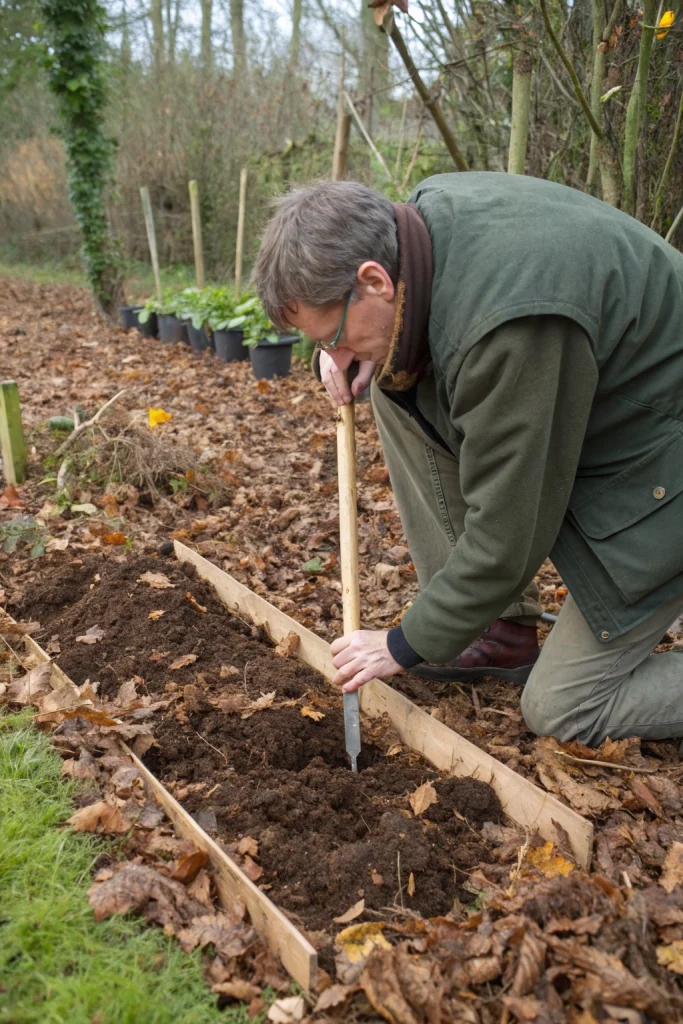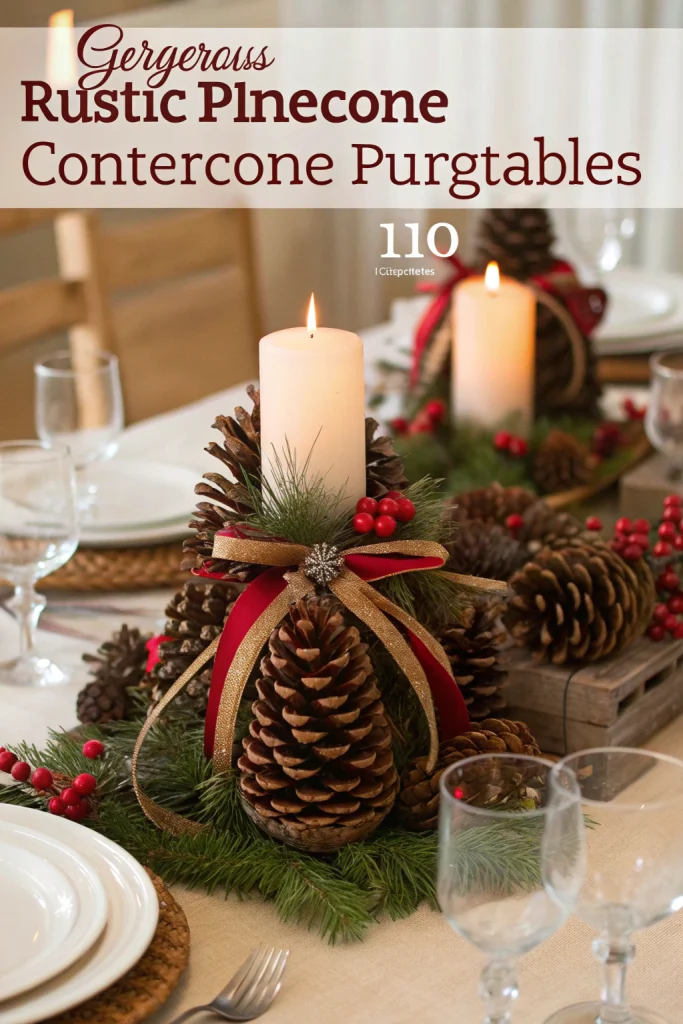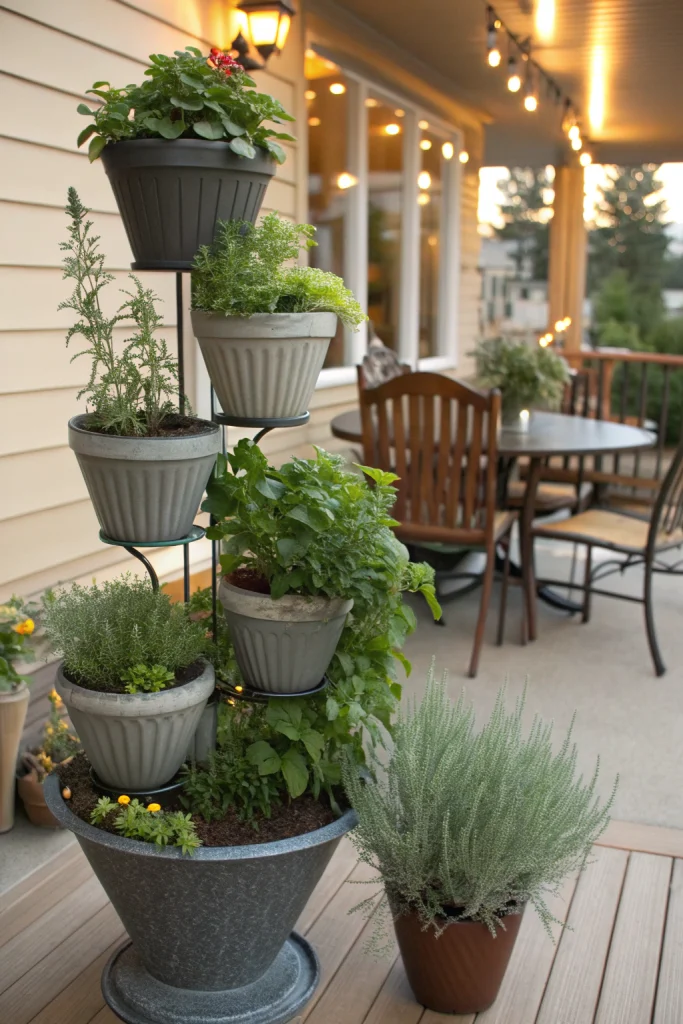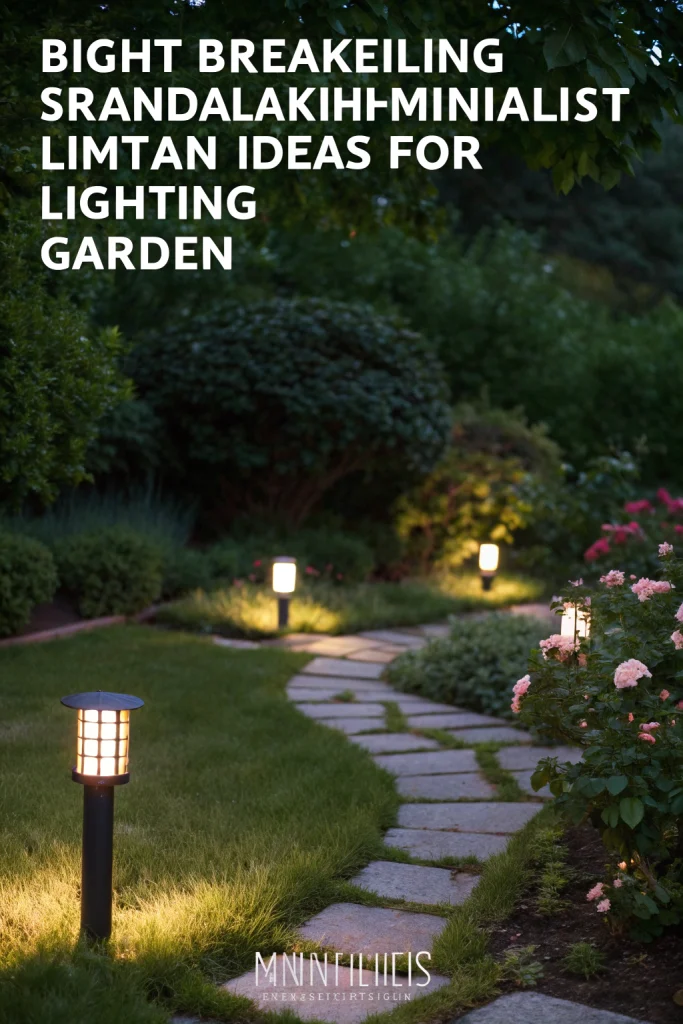Table of Contents
ToggleBuild, Simple, Leaf-Mould, Pen — The Ultimate Guide to Sustainable Garden Results
Build, Simple, Leaf-Mould, Pen blends practical, low-cost techniques with real environmental impact. Use these eco-first methods to reduce waste, save water, build living soil, and support pollinators—all while keeping your garden beautiful and productive through the cold season.
[lwptoc]
Why Build, Simple, Leaf-Mould, Pen Matters This Season
Winter prep is when smart gardeners get ahead: leaves become mulch, rain becomes irrigation, and “waste” becomes soil food. With Build, Simple, Leaf-Mould, Pen, you set resilient foundations now—so spring growth is faster, healthier, and cheaper.
Core Materials & Tools for Build, Simple, Leaf-Mould, Pen
Successfully implementing the Build, Simple, Leaf-Mould, Pen strategy begins with understanding the essential materials and tools. These aren’t necessarily expensive or hard to find; in fact, many are likely already in your garden or readily available at little to no cost, emphasizing the ‘Simple’ aspect of this approach.
- Dry Leaves, Shredded Cardboard, Twig Cuttings: These are your primary components for mulch and sheet-mulch layers. Leaves are abundant in autumn, cardboard can be sourced from packaging, and twig cuttings are a natural byproduct of pruning. They break down slowly, enriching the soil with organic matter, suppressing weeds, and retaining moisture.
- Compost Setup: Whether it’s a dedicated compost bin, a compact bokashi system for kitchen scraps, or a worm tower for container gardens, a method for composting is crucial. This transforms organic waste into nutrient-rich soil amendment, feeding your plants naturally.
- Rain Barrel with Downspout Diverter: Water conservation is key. A rain barrel collects precipitation from your roof, providing a free, chlorine-free water source for your garden. A downspout diverter ensures efficient collection and prevents overflow.
- Watering Can or Soaker Hose: For targeted and efficient watering, especially when using collected rainwater. A soaker hose delivers water directly to the root zone, minimizing evaporation.
- Reusable Pots (Terracotta/Metal/Wood) and Sturdy Seed Trays: Move away from single-use plastics. Durable pots and trays reduce waste and are a long-term investment. Terracotta breathes, metal is robust, and wood provides good insulation.
- Hand Tools (Stainless Trowel, Pruners, Rake): Invest in good quality, ergonomically designed tools. Stainless steel resists rust, and sharp pruners make clean cuts, promoting plant health. A sturdy rake is invaluable for gathering leaves and leveling beds.
- Simple Sieve: Essential for processing leaf mould and compost into a fine, uniform texture, ideal for seed starting or top-dressing delicate seedlings.
Step-by-Step Method for Build, Simple, Leaf-Mould, Pen
Step 1 — Build a No-Dig Base with Leaves (Build, Simple, Leaf-Mould, Pen Foundation)
The no-dig method is a cornerstone of sustainable gardening, and leaves are its hero. Begin by laying cardboard directly onto bare soil, ensuring that the edges overlap by 10–15 cm to prevent weeds from sneaking through. Wet the cardboard lightly to help it settle and begin breaking down. Next, spread a generous layer (5–10 cm) of shredded leaves on top. If you don’t have a shredder, you can mow over dry leaves with your lawnmower to break them down. Finish with a thin layer of compost. This creates a powerful, living layer that suppresses weeds, conserves moisture by regulating soil temperature, and, most importantly, jumpstarts the fungal activity essential for healthy soil, setting the perfect stage for your Build, Simple, Leaf-Mould, Pen garden.
Step 2 — Capture Rain & Water Smarter (Water Conservation with Build, Simple, Leaf-Mould, Pen)
Water is a precious resource, and the Build, Simple, Leaf-Mould, Pen approach emphasizes efficient use. Install a rain barrel connected to a downspout. This provides free, chemical-free water for your garden, reducing your reliance on municipal water. When watering, do so early in the day to minimize evaporation and allow plants to absorb moisture before the heat of the sun. Group your pots and containers by their water needs; drought-tolerant plants together, and moisture-lovers together. This prevents overwatering some and underwatering others. Mulch containers with a layer of leaves—this dramatically reduces evaporation and keeps soil temperatures stable. Adding saucers with gravel beneath pots also helps catch excess water, allowing it to slowly re-evaporate, creating a humid microclimate around the plant and reducing waste.
Step 3 — Feed Soil Life Naturally (Nurturing the Soil in Your Build, Simple, Leaf-Mould, Pen Garden)
Healthy soil is the heart of a thriving garden. Begin a cold compost system by layering fallen leaves with kitchen scraps like coffee grounds, fruit and vegetable peels, and crushed eggshells. A cold compost breaks down slowly but requires less active management. Alternatively, for faster breakdown of kitchen waste, use bokashi indoors. Once fermented, trench the bokashi into resting garden beds, where it will rapidly enrich the soil. Last year’s leaf mould is a gardener’s gold. Sieve it to create a fine, crumbly, nutrient-rich medium—perfect for starting seeds. This silky leaf mould provides excellent drainage and moisture retention, giving your early sowings the best possible start, showcasing the power of Build, Simple, Leaf-Mould, Pen principles.
Step 4 — Balance Pests with Habitat (Ecological Harmony in Your Build, Simple, Leaf-Mould, Pen Space)
Instead of reaching for synthetic pesticides, encourage a balanced ecosystem in your Build, Simple, Leaf-Mould, Pen garden. Leave select seed heads on plants through winter; these provide vital food for birds, which in turn help control pest populations. Create a habitat corner in your garden with bundles of hollow stems, fallen branches, and leaves. This provides shelter for beneficial insects like ladybugs and lacewings, which are natural predators of aphids and other common pests. Use mild soap, neem oil, or garlic sprays only as a last resort and sparingly. Prioritize companion planting: strategically place plants that repel pests or attract beneficial insects near vulnerable crops. For instance, marigolds can deter nematodes, and dill attracts predatory wasps. These natural solutions are far more sustainable and effective in the long run.
Environmental & Cost Impact of Build, Simple, Leaf-Mould, Pen
Embracing the Build, Simple, Leaf-Mould, Pen philosophy offers profound environmental and financial benefits. This method champions a circular economy within your garden, transforming what might otherwise be considered waste into valuable resources.
- Waste Diversion: Annually, millions of bags of leaves end up in landfills, contributing to methane emissions. By converting these leaves into rich leaf mould and mulch, you divert significant organic waste, transforming a disposal problem into a soil-enriching solution.
- Reduced Water Consumption: The extensive use of mulch, particularly leaf mulch, dramatically reduces evaporation from the soil surface. This means your garden requires less frequent watering, conserving precious water resources and reducing your water bill. Rainwater harvesting further minimizes reliance on municipal supplies.
- Enhanced Soil Health & Biodiversity: By constantly adding organic matter through no-dig methods, leaf mould, and compost, you foster a vibrant soil food web. This increases microbial activity, improves soil structure, enhances nutrient availability, and boosts the soil’s capacity to retain both water and air. A healthy, living soil is more resilient to disease and extreme weather.
- Reduced Chemical Reliance: Promoting natural pest control through habitat creation for beneficial insects, along with healthy soil that grows more vigorous plants, reduces the need for synthetic pesticides and fertilizers. This protects local waterways from chemical runoff and safeguards the health of pollinators and other vital organisms.
- Carbon Sequestration: Building organic matter into your soil actively sequesters carbon from the atmosphere, turning your garden into a small, but significant, carbon sink.
- Cost Savings: By utilizing free resources like fallen leaves, kitchen scraps, and rainwater, and by reducing the need for purchased soil amendments, fertilizers, and pesticides, the Build, Simple, Leaf-Mould, Pen approach significantly lowers the cost of maintaining your garden.
- Increased Biodiversity: Providing habitat for insects and birds, and choosing native plants, encourages a wider range of species, contributing to local ecosystem health and resilience.
The collective impact of these simple practices results in a more sustainable, self-sufficient, and thriving garden that benefits both your wallet and the planet.
Advanced Eco Hacks for Build, Simple, Leaf-Mould, Pen Practitioners
Once you’ve mastered the basics of Build, Simple, Leaf-Mould, Pen, you can elevate your sustainable gardening practices with these advanced eco hacks:
- Charge Homemade Biochar: Biochar is a stable form of carbon that can significantly improve soil structure and water retention. Before integrating it into your beds, “charge” your homemade biochar by soaking it in compost tea or liquid seaweed. This fills its porous structure with nutrients and beneficial microbes, making it much more effective when added to the soil.
- Swap Plastic Seed Trays for Soil Blocks: Eliminate plastic waste entirely from your seed-starting process by using soil block makers. These tools compress soil into self-contained cubes, eliminating the need for pots and trays. Seedlings suffer less transplant shock as their roots are air-pruned and they can be planted directly into the garden with minimal disturbance.
- Try Milk-Jug Winter Sowing: This ingenious method allows you to start hardy perennials, cold-tolerant vegetables (like lettuce and spinach), and even some annuals outdoors in recycled plastic milk jugs during the winter. The jugs act as miniature greenhouses, protecting seedlings from harsh conditions while exposing them to natural temperature fluctuations, resulting in robust, stocky plants perfectly acclimated to outdoor conditions come spring. This is a wonderfully simple and effective way to extend your growing season and nurture your Build, Simple, Leaf-Mould, Pen approach.
- Insulate Patio Pots with Cardboard Jackets and Leaf Fill: For container gardeners, winter can be tough on perennial plants. Protect the roots of sensitive plants in patio pots by creating insulating jackets. Wrap the pots with layers of cardboard, securing them with twine or tape. Then, fill the space between the pot and the jacket with dry leaves. This creates an effective thermal barrier, preventing roots from freezing and extending the life of your container plants through colder months.
Design & Aesthetics (Keep It Beautiful with Build, Simple, Leaf-Mould, Pen)
Sustainability doesn’t mean sacrificing beauty. In fact, the Build, Simple, Leaf-Mould, Pen approach often leads to a more organic, harmonious aesthetic. Here’s how to blend eco-conscious practices with eye-pleasing design:
- Recycled-Wood Edges: Instead of new timber, source reclaimed wood for garden bed edges. Old fence posts, pallets, or even fallen branches from your yard can create charming, rustic borders that define spaces while adding character and reducing waste.
- Mossy Planters and Sculptures: Embrace the natural aging process. Encourage moss growth on terracotta pots, stone features, or even old ceramic items. Moss adds a lush, verdant patina that softens hard edges and brings a sense of timeless tranquility to the garden.
- Warm Solar Path Lighting: Opt for solar-powered LED lights along paths or to highlight features. Their soft, warm glow provides enchantment without consuming electricity, aligning perfectly with the sustainable ethos of Build, Simple, Leaf-Mould, Pen. Choose designs that complement your garden’s style, from subtle ground lights to decorative lanterns.
- Restrained Palette & Repeated Textures: A key to cohesive garden design is a limited color palette. Choose a few dominant colors for your flowers and foliage and repeat them throughout the garden. Similarly, integrate texture through different plant forms (feathery grasses, broad hosta leaves, rough bark), hardscaping materials (gravel, smooth stones), and garden features. This creates visual interest and a sense of calm order, especially appealing in a Nordic-inspired, naturalistic garden style.
- Embrace “Controlled Wildness”: Allow some areas to have a slightly wilder, natural look. For instance, let some self-seeded annuals grow where they land, or create pockets of undisturbed leaves and twigs for wildlife. This integrates nature more deeply into your design, enhancing biodiversity without looking messy—it’s about intentional wildness that supports the goals of Build, Simple, Leaf-Mould, Pen.
- Water Features with Natural Materials: If adding a water feature, consider one made from natural stone or recycled materials. Small bird baths or a simple basin filled with water for pollinators can add a reflective quality and attract wildlife, enhancing the garden’s sensory experience.
By thoughtfully integrating these design elements, your Build, Simple, Leaf-Mould, Pen garden will not only be sustainable and productive but also a beautiful, tranquil retreat that reflects your commitment to the environment.
Common Mistakes to Avoid in Your Build, Simple, Leaf-Mould, Pen Journey
Even with the best intentions, it’s easy to fall into habits that undermine sustainable gardening efforts. Here’s a guide to common pitfalls to avoid when implementing Build, Simple, Leaf-Mould, Pen strategies:
- Using Peat Moss: This is arguably the biggest mistake in eco-gardening. Peat moss is harvested from ancient peat bogs, which are critical carbon sinks and unique ecosystems. Its extraction is highly unsustainable and destructive. Instead, as advocated by Build, Simple, Leaf-Mould, Pen, choose leaf mould. It’s a superior soil amendment, providing excellent water retention and aeration, and you can make it for free from your own fallen leaves.
- Over-Tidying: While a neat garden has its appeal, excessive tidiness can be detrimental to biodiversity. Removing every fallen leaf, pruning all spent perennial stalks immediately, or clearing out every “messy” corner eliminates vital overwintering habitats for beneficial insects, pollinators, and other small creatures. Remove hazards, but keep habitat zones (like brush piles or areas with undisturbed leaves/stems) for your garden allies to shelter and reproduce.
- Watering at Midday: Watering when the sun is highest in the sky leads to significant evaporation losses. Most of the water will simply disappear into the atmosphere before it can reach plant roots. Always water early in the morning or late in the evening. This allows the plants to absorb the moisture efficiently and reduces fungal diseases that thrive in prolonged dampness.
- Heavy Fertilizing in Cold Soils: Chemical fertilizers don’t just feed plants; they also feed soil microbes. In cold soil, microbial activity is significantly slowed down. Applying heavy synthetic fertilizers at this time can lead to nutrient runoff into waterways before plants can utilize them, causing pollution and wasting resources. Focus instead on feeding the soil with organic matter like compost and leaf mould. This slow-release approach supports microbial life, which in turn makes nutrients available to plants when they need them, aligning perfectly with the principles of Build, Simple, Leaf-Mould, Pen.
- Ignoring Soil pH: Soil pH affects nutrient availability. While organic amendments like leaf mould and compost generally buffer pH, it’s worth getting a basic soil test every few years. If your pH is severely off, even a nutrient-rich soil might not release its goodness to plants.
- Planting Non-Native Species Without Care: While not every plant needs to be native, an overreliance on non-native species, especially invasive ones, can disrupt local ecosystems, outcompete native flora, and fail to provide food or habitat for local wildlife. Prioritize native plants, especially for nectar and pollen, to support local pollinators, a key tenet of Build, Simple, Leaf-Mould, Pen.
- Using Pesticides Indiscriminately: Even organic pesticides can harm beneficial insects, which are crucial for maintaining a balanced ecosystem. Only use pesticides as a last resort, after trying cultural methods (e.g., hand-picking pests, improving plant health, companion planting). Always identify the pest correctly and use the least toxic option.
By being mindful of these common mistakes, you can ensure your Build, Simple, Leaf-Mould, Pen garden thrives sustainably and efficiently.
Storage & Winter Care for Your Build, Simple, Leaf-Mould, Pen Garden
The colder months aren’t just about resting; they’re an essential time for preparing your Build, Simple, Leaf-Mould, Pen garden for renewed vigor in spring. Proper storage and winter care protect your assets and streamline future efforts.
- Cover Rain Barrels: Once temperatures drop consistently below freezing, drain your rain barrel completely to prevent ice expansion from cracking it. Disconnect the downspout diverter and either store the barrel indoors or cover it securely to keep out debris. This ensures your barrel is ready and undamaged for spring rains.
- Aerate Compost: Continue to turn your compost pile regularly, even if decomposition slows down in colder temperatures. Aeration introduces oxygen, which is vital for aerobic bacteria that break down organic matter. A well-aerated pile will break down faster and smell better, yielding rich compost for your spring beds. If you’re running a simpler leaf mould bin, ensure it’s still damp but not waterlogged.
- Label Leaf-Mould Pens by Date: If you’re maintaining multiple leaf mould bins or cages, clearly label them with the date the leaves were added. Leaf mould can take 1-2 years to fully mature, depending on the type of leaves (oak leaves take longer than maple). Knowing which batch is ready will help you plan your soil amendments effectively. The ‘Pen’ in Build, Simple, Leaf-Mould, Pen specifically refers to an enclosure for holding these valuable leaves.
- Oil Cleaned Tools: Before storing your hand tools (trowels, pruners, shovels) for winter, clean them thoroughly of all soil and rust. Then, apply a light coat of WD-40 or linseed oil to metal parts to prevent rust during storage. Sharpen pruner blades if needed. Store them in a dry place, perhaps hanging them up to keep them organized and away from moisture.
- Store Dry Cardboard Flat: Collect and flatten cardboard boxes as you acquire them throughout the year. Store them in a dry, accessible location. This ensures you have a ready supply for quick sheet-mulch builds when new beds are planned or existing ones need an extra layer to suppress weeds and prepare for spring planting.
- Protect Delicate Plants: For tender perennials or newly planted shrubs, apply a thick layer of leaf mulch around their base. This insulates roots from hard freezes and helps retain soil moisture, a critical component of the Build, Simple, Leaf-Mould, Pen strategy.
- Clean and Store Empty Pots: Wash and dry any empty pots and seed trays. Storing them neatly helps prevent disease spores from overwintering and ensures they are clean and ready for early spring seed starting.
- Review and Plan: Use the quieter winter months to review your garden’s performance from the past season. What worked well? What didn’t? Plan for the next season, considering crop rotation, new plant additions, and how you can further refine your Build, Simple, Leaf-Mould, Pen practices.
By diligently attending to these winter tasks, you safeguard your garden’s health and resources, setting the stage for a highly successful and sustainable growing season ahead.
Conclusion
Build, Simple, Leaf-Mould, Pen proves greener gardening is easier, cheaper, and more resilient. Start with leaves, water capture, soil life, and habitat—your spring garden will repay you with vigor and fewer inputs. This integrated approach not only reduces waste and conserves resources but also fosters a thriving, biodiverse ecosystem right in your backyard. By embracing these simple, actionable strategies, you create a garden that is not only productive and beautiful but also deeply sustainable, leaving a positive impact on your local environment and beyond. The journey of transforming your garden into a self-sustaining, eco-friendly haven is a rewarding one, beginning with these fundamental principles.
FAQ — Getting Started with Build, Simple, Leaf-Mould, Pen
- Can I start now? Absolutely! The beauty of Build, Simple, Leaf-Mould, Pen is its adaptability. Even in the middle of winter, you can focus on collecting and storing leaves for leaf mould, setting up a rain capture system (if not frozen), preparing no-dig beds with available cardboard, and ensuring your tools are clean and cared for. These preparatory steps are crucial for a successful spring.
- Only a balcony? No problem! You can still apply the principles of Build, Simple, Leaf-Mould, Pen. Use smaller worm towers or bokashi systems for kitchen scraps in containers. Insulate your pots with cardboard jackets and a layer of leaves to protect roots from temperature extremes. Collect rainwater in smaller decorative barrels or even buckets for watering. You can still make small batches of leaf mould in permeable bags or small bins.
- Special tools required? Not at all. The ‘Simple’ aspect of Build, Simple, Leaf-Mould, Pen means working with what you have. A basic set of gardening tools—a rake for gathering leaves, a good pair of pruners for cutting material, and perhaps a simple compost bin (or even just an open pile or sturdy black bags for leaf mould)—is entirely sufficient. Innovation and resourcefulness are more important than specialized equipment.
- Science behind this? Yes, there’s robust ecological and horticultural science supporting every aspect of Build, Simple, Leaf-Mould, Pen. For instance, leaf mould improves soil structure, water retention, and microbial diversity through fungal decomposition. No-dig systems protect soil layers and worm habitats. Rainwater is free of chlorine and beneficial for plant roots. Habitat creation directly supports integrated pest management. These practices are rooted in permaculture principles and regenerative agriculture. For deeper insights, see the resources below.
- Healthline — Growing food in limited space
- Harvard T.H. Chan — Plate & Planet (sustainability)
- Medical News Today — Health benefits of gardening




